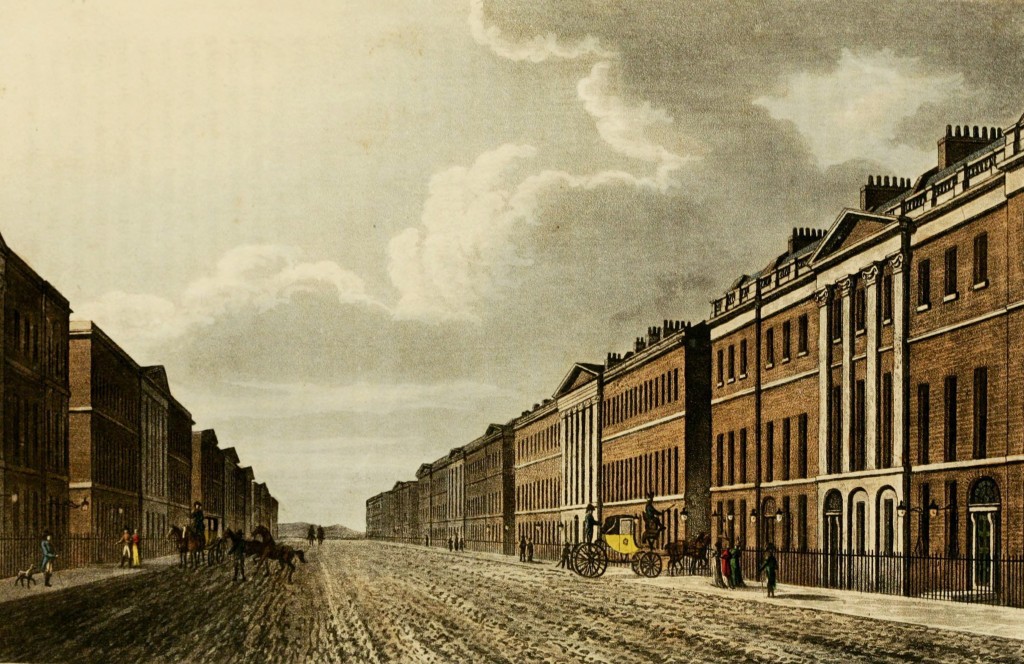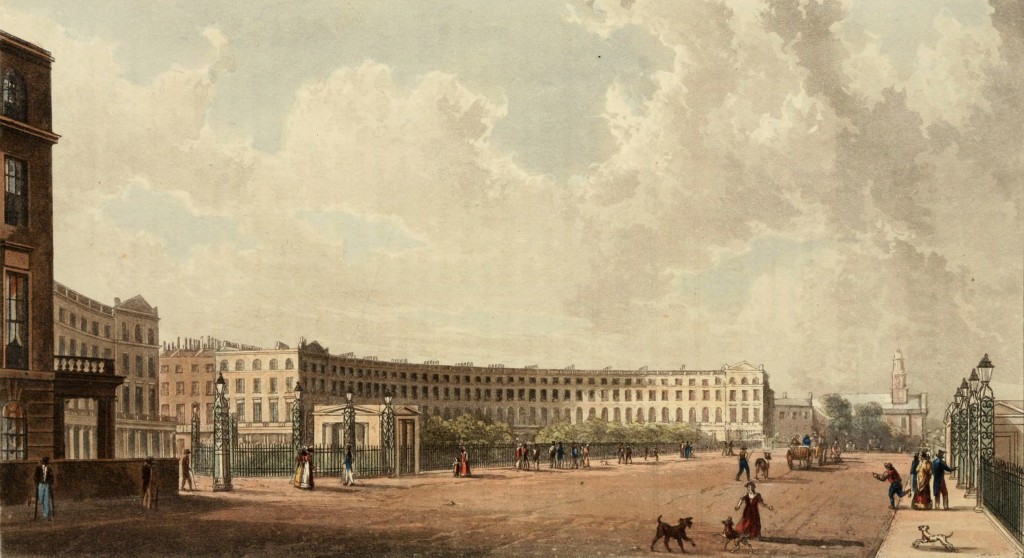Streets of London – Portland Place, London 1810-1820

Portland Place, London circa 1815
from The Repository of arts, literature, commerce, manufactures, fashions and politics

The Crescent, Portland Place, London circa 1822
from The Repository of arts, literature, commerce, manufactures, fashions and politics

Langham Place and Portland Place circa 1822
from The Repository of arts, literature, commerce, manufactures, fashions and politics
“It is within the memory of some persons, that Parliament-street and Whitehall once formed the finest avenue in the metropolis. Oxford-street was yet but indifferently inhabited, and Portland-place not built. Oxford-street ceased at Mary-le-bonelane: at that spot Tyburn-road began, and for many years presented the sort of humble character of buildings that usually skirt the environs of a great city.”
“During the reign of Queen Anne, improvements were projected about Cavendish-square, which were carried into effect during the reigns of George I and II but they ceased on the west side of Titchfield-street, and Oxford-street was not benefited materially even so far westward as Tottenham-Court road.”
“Lord Harcourt, Lord Bingley, and the Duke of Chandos, having given eclat to this spot, Lord Foley, about 1760, erected his mansion, after a plan from Palladio, on ground obtained of the Duke of Portland, who estates are very considerable in this part of the town.”
“This street being chiefly undertaken by speculative building, whose reimbursements were precarious, great care was taken to design them, so that they might be erected with strict economy. […] The subsequent adoption of stuccoes for the covering of houses, in the imitation of stone, superadded to a better knowledge of the principles of picturesque effect. […] On a comparison of these styles of building will be seen some of the advantages obtained in the designs for the New Street [Regent Street].”
“Until the commencement of the improvements in question, Portland-place was closed at both extremities, southward by the garden-wall of Foley-House, and at the north by an iron railing, dividing it from a pasture, called Harley Field, which separated the end from the New Road, so that the entrances and means of egress of this fine street were inconvenient to its inhabitants, and inadequate to its consequence.” The Repository of arts, literature, commerce, manufactures, fashions and politics, 1822.
